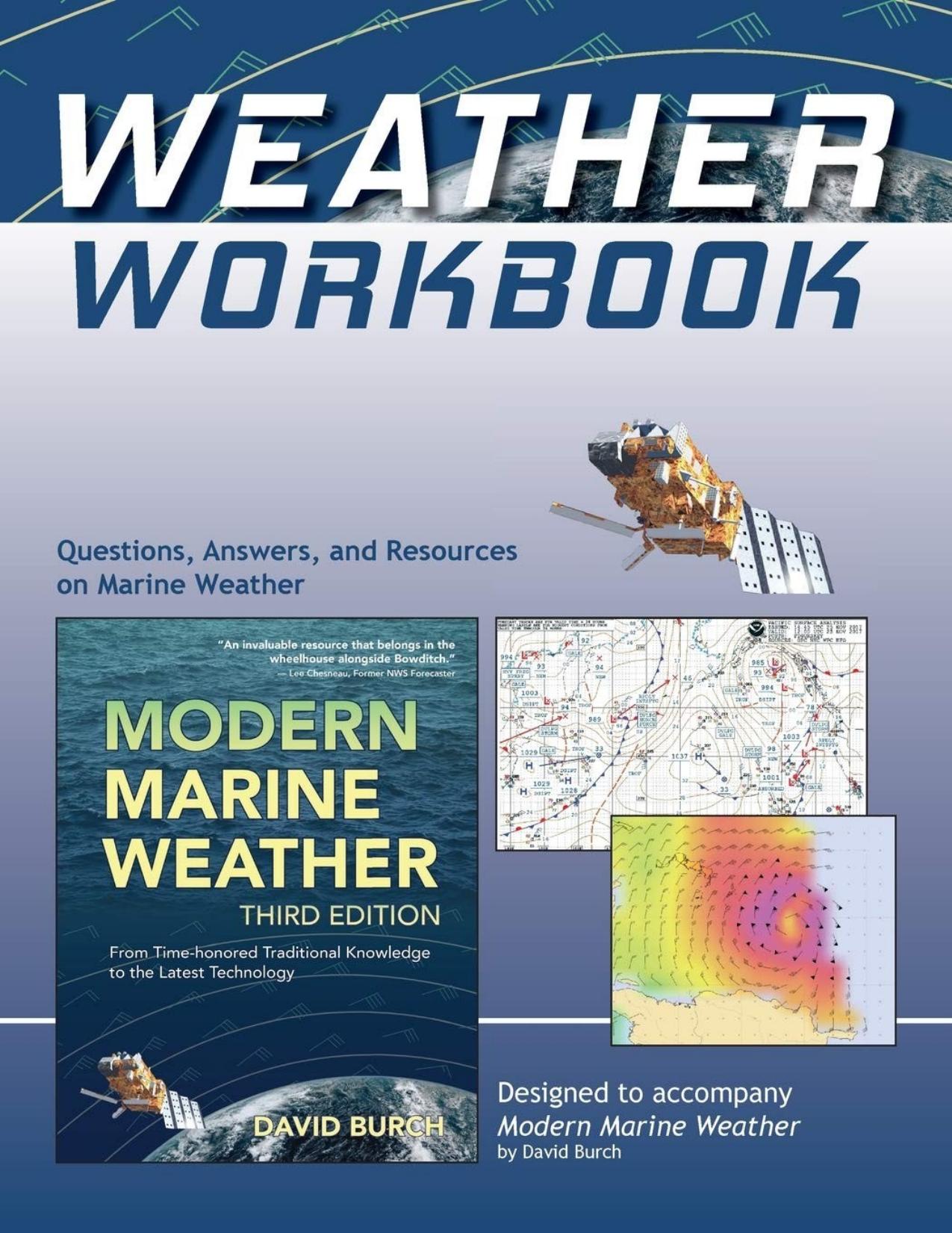Weather Workbook: Questions, Answers, and Resources on Marine Weather by David Burch

Author:David Burch
Language: eng
Format: mobi, epub, pdf
Tags: Weather, Education, General, Nature
Publisher: Starpath Publications
Published: 2008-09-14T20:00:00+00:00
3. What are the primary sources of weather data in the Southern Hemisphere?
Lesson 1. Introduction
1.1 (C); 1.2 (D); 1.3 (B); 1.4 (D); 1.5 (D); 1.6 (C); 1.7 (C); 1.8 Ocean Prediction Center, National Data Buoy Center, National Hurricane Center; 1.9 (B);
Lesson 1. Points to Ponder
1. Proper study teaches us where and when the bad weather is and we plan our trips around it. Even in local waters we can use forecasts to avoid bad weather. Bad weather is generally well forecasted, whereas we need more wind almost always, and it takes more skill to find it. Forecasts are not as good in areas of good weather as they are for bad, and a few extra knots of wind is a big asset to most cruises.
2. If we have no forecasts, then the more we know about natural signs the better off we are. In most cases we have forecasts, so our task with observations is to judge the timing of the eventâearly, late, or on time. It is usually the timing that is most difficult for the forecasters to predict.
3. When facing the wind, a shift to the right is a veer, and a shift to the left is a backing shift, regardless of wind direction. This is a fundamental concept because we can describe many events based upon it. For example in the NH, wind gusts experienced away from land, typically veer; wind coming off a shore line will veer as it enters the water, sea breezes tend to veer as they build, bad weather offshore in many cases is usually preceded by a backing shift, and so on.
4. Synopsis is a general description of current weather patterns and trends. Forecast or prognosis is the prediction of what will take place later, and observations are actual reports of what is taking place at the moment at buoys, lighthouses, and airports. Synopses and forecasts are usually updated 4 times a day. Observations on VHF were historically every 3 hours, unless severe weather was taking place, but may be hourly on some stations with new technology. It is valuable to look up and note the actual times of forecasts and observations for your local station.
Download
Weather Workbook: Questions, Answers, and Resources on Marine Weather by David Burch.epub
Weather Workbook: Questions, Answers, and Resources on Marine Weather by David Burch.pdf
This site does not store any files on its server. We only index and link to content provided by other sites. Please contact the content providers to delete copyright contents if any and email us, we'll remove relevant links or contents immediately.
How to Do Nothing by Jenny Odell(2652)
A Forest Journey by John Perlin(2590)
The Plant Messiah by Carlos Magdalena(2459)
Babylon's Ark by Lawrence Anthony(2077)
Energy Myths and Realities by Vaclav Smil(2070)
The ESV Study Bible by Crossway Bibles(1964)
Abbey in America by Murray John A(1812)
Fatal Storm by Rob Mundle(1793)
Witness Tree by Lynda V. Mapes(1699)
Shadows on the Gulf by Rowan Jacobsen(1521)
Client Earth by James Thornton(1511)
Brokeback Mountain by Annie Proulx(1474)
Coming Back to Life by Joanna Macy(1469)
Water Rights and the Environment in the United States by John Burch(1417)
Cosmos by Carl Sagan(1406)
Ten Billion by Stephen Emmott(1388)
Mycelium Running: How Mushrooms Can Help Save the World by Paul Stamets(1293)
The overachievers by Robbins Alexandra(1288)
The Uninhabitable Earth by David Wallace-Wells;(1198)
